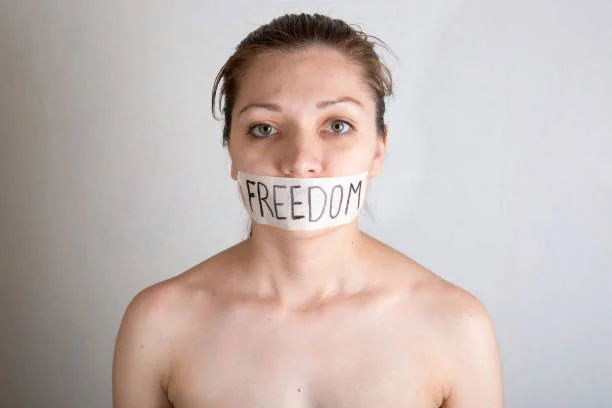There’s a strange kind of awakening happening in America—one that isn’t loud, but steady. For decades, conversations about mental health were kept behind closed doors, often disguised as “stress” or “just a rough patch.” But lately, the cultural tone has shifted. It’s not perfect, and it’s not universal, but the national dialogue around how we treat and talk about mental well-being is starting to sound more like actual care and less like avoidance America’s Quiet Rebellion. The stigma hasn’t disappeared, but it’s being chipped away in places you’d never expect—corporate boardrooms, group chats, classrooms, even football sidelines. What’s emerging is a patchwork of change that finally feels human.
Expand your perspective—this related post holds tips to boost your success.
The Long Shadow of Silence
To understand where we’re heading, it helps to admit how long we avoided this. For most of the 20th century, mental health care in America’s Quiet Rebellion was something you whispered about, not something you sought. The old guard taught people to tough it out, pray it away, or bury it under work. The result was predictable: generations of untreated anxiety, depression, and trauma disguised as productivity. That cultural DNA still runs deep. Even now, the subtle weight of mental health stigma can show up in how someone hesitates before calling a therapist, or how an employer might wince at the idea of “mental health days.” It’s not that people don’t care—it’s that they’ve been conditioned to see care as weakness.
Yet, the silence is cracking. Celebrities talking openly about therapy may sound trivial, but it matters. The more mental health becomes part of everyday language, the less power stigma holds. Social media, for all its noise, has also turned mental wellness into a shared conversation. That can be messy—half the advice online could use a fact-check—but it’s still better than the silence that came before it.
From Crisis to Conversation
The pandemic did something unexpected: it stripped away the illusion that mental health issues only affect “certain people.” When entire households were stuck indoors juggling jobs, kids, and constant uncertainty, the collective façade collapsed. Suddenly, therapy wasn’t a luxury—it was a survival tool. Companies scrambled to add mental health coverage. Schools started using language that would’ve seemed radical ten years ago: mindfulness, trauma-informed learning, emotional regulation at America’s Quiet Rebellion.
This cultural reckoning didn’t fix the system, but it did expose its cracks. Access remains a mess, especially for people without insurance or in rural areas. Yet there’s also a growing movement of innovation within mental health care itself. Teletherapy has expanded reach. Culturally competent counseling is finally being recognized as essential, not optional. The old image of a psychiatrist behind a mahogany desk has evolved into something more flexible and inclusive. You can now see a psychiatrist in Chicago, D.C. or anywhere in between through a laptop screen, without leaving your kitchen table. That accessibility shift might be one of the quiet revolutions of this decade.
The New Language of Care
Words matter. The way we talk about mental health shapes how we respond to it. It’s not uncommon to hear people describe themselves as “broken” or “crazy” when what they really mean is overwhelmed, anxious, or just human. That vocabulary carries baggage, and it’s being rewritten—slowly, but noticeably. Public figures are dropping labels and instead using language that normalizes mental health as part of overall health. It’s not a branding exercise; it’s a necessary evolution in empathy.
In workplaces, HR teams are rethinking how to frame well-being policies. Instead of the token yoga day, many companies are integrating therapy reimbursement, mental health PTO, and leadership training that actually addresses burnout instead of ignoring it. Schools are also getting better at naming what students are feeling. Kids today might roll their eyes at mindfulness lessons, but those early lessons in self-awareness are changing the next generation’s relationship with their emotions. That’s a cultural shift that no wellness app could buy.
The Cost of Getting It Wrong
For all the progress, there’s a danger in oversimplifying the conversation. The pendulum can swing too far toward hashtags and hot takes, where therapy becomes an aesthetic and medication becomes a meme. Mental health deserves more than a trending soundbite. When the conversation turns performative, people who genuinely need help can get lost in the noise.
Another complication is how unevenly progress is distributed. Urban centers might have dozens of mental health resources, while rural towns still rely on one overbooked clinic. Economic privilege can dictate whether someone gets real help or just a brochure. Reform has to tackle that imbalance or the progress will remain cosmetic. The goal isn’t to turn therapy into a lifestyle—it’s to make mental health care as normal and accessible as a doctor’s visit. We can’t pretend that awareness alone solves anything; it’s what we do with that awareness that counts.
Healing As A Collective Act
One of the most inspiring changes is how communities are starting to take healing into their own hands. Faith groups are opening their doors to mental health workshops. Barbershops are becoming informal counseling hubs in Black communities. Veteran networks are tackling PTSD through peer-led initiatives that skip the clinical jargon and go straight to connection. These aren’t top-down reforms—they’re grassroots, built on trust and shared experience.
That collective approach matters because isolation breeds despair. The modern world, despite being more connected than ever, has made it easier to feel alone. These community-driven efforts offer something traditional systems often can’t: belonging. Healing isn’t always about a diagnosis; sometimes it’s about being seen. When mental health becomes something we nurture together, not just manage individually, the tone of the conversation changes completely.
Mental health in America’s Quiet Rebellion isn’t a lost cause or a crisis that can’t be solved. It’s a work in progress—a patchwork quilt stitched from honesty, resilience, and late-night conversations that finally say what needed to be said decades ago. The truth is, we’re not just getting better at talking about mental health. We’re learning, slowly but surely, how to listen.
Hungry for knowledge? Explore more insights at 2A Magazine crafted to expand your horizon.







